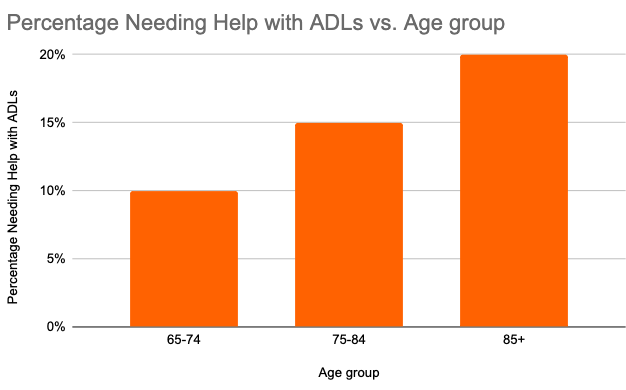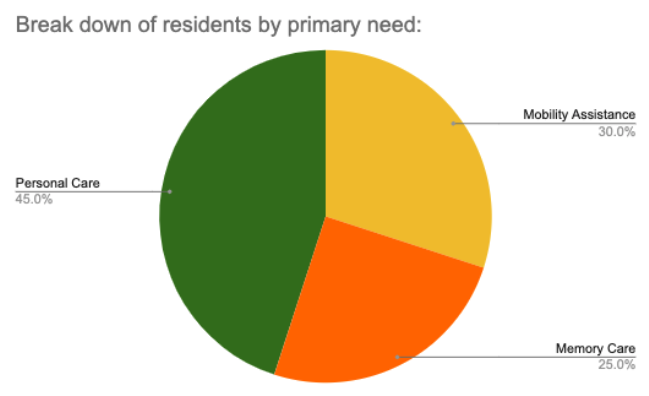What Is Assisted Living?
Assisted living is a type of housing for seniors who need help with daily tasks but don’t need the round-the-clock medical care of a nursing home. It’s designed to help seniors live as independently as possible while getting support with things like bathing, dressing, eating, using the bathroom, and moving around. These tasks are called “activities of daily living” (ADLs). For many women, caring for aging parents or loved ones, assisted living can offer peace of mind, ensuring safety and community while maintaining dignity.
Research from the
National Institute on Aging (NIA) highlights that assisted living balances independence and support, making it a popular choice for seniors who want to stay active but need help. The average cost in 2023 was over $64,000 annually, according to
Kaiser Family Foundation, which underscores the importance of understanding payment options.
Who Qualifies for Assisted Living?
Assisted living is for seniors who need help with everyday tasks but don’t need a doctor or nurse all the time. This includes help with bathing, dressing, preparing meals, and taking medications. A survey from
Where You Live Matters indicates most move in between ages 75-84, with 20% of U.S. adults aged 85+ needing or receiving help with ADLs. This suggests it’s appropriate for those who are starting to struggle but want to stay independent.
To illustrate, consider a chart showing the percentage of seniors needing assistance by age:
Who Lives in Assisted Living?
Over 810,000 Americans reside in assisted living, according to the
American Health Care Association. These are typically older adults who are frail, have trouble walking, or have chronic conditions like heart disease. They need help with medications, meals, or getting around but don’t require 24-hour medical care. Facilities also offer social activities, like group meals or exercise classes, fostering a sense of community.
This breakdown, inferred from the American Health Care Association, shows the diversity of needs, ensuring facilities cater to various seniors.
Which Assisted Living Facilities Accept Medicaid?
Paying for assisted living can be challenging, with most facilities requiring private payment. However, some accept Medicaid, a government program for low-income individuals, covering healthcare costs. According to
Kaiser Family Foundation, Medicaid pays for daily services for about 200,000 residents, or one in five, but coverage varies by state. It often covers care services like help with bathing or medications, not room and board.
For example, in Washington state,
DSHS lists contracted facilities, while
Medicaid Planning Assistance explains how to research homes. To find options near you, contact your state Medicaid office or search for
assisted living near me, here. This website allows you to search for assisted living communities by city, state, or service area, with over 9,273 results available.
Can Assisted Living Kick You Out?
Yes, assisted living facilities can discharge residents, often called “evictions,” but they must follow rules. Common reasons include health needs exceeding facility capabilities, like needing 24-hour care, behavioral issues disrupting the community, or financial inability to pay. Facilities must give at least 30 days’ notice, provide a health summary, discharge reason, and a plan for where to go next.
For instance, if a resident’s dementia advances and they need memory care, the facility might discharge them to a nursing home. Residents have rights to appeal, often through administrative hearings, and can seek help from the state’s Long-Term Care Ombudsman, as suggested by
Senior Justice. This ensures fairness, especially for long-term residents.
Who Is Appropriate for Assisted Living?
Appropriateness aligns with who qualifies: seniors needing help with daily tasks but not 24-hour medical care. This includes those with mobility issues, chronic conditions, or early dementia, as long as they can participate in community life. Residents must be at least 18 and need assistance with two or more ADLs, though most are seniors unable to live independently but not needing skilled nursing. This balance ensures assisted living supports independence while addressing needs, making it ideal for those transitioning from home care.

